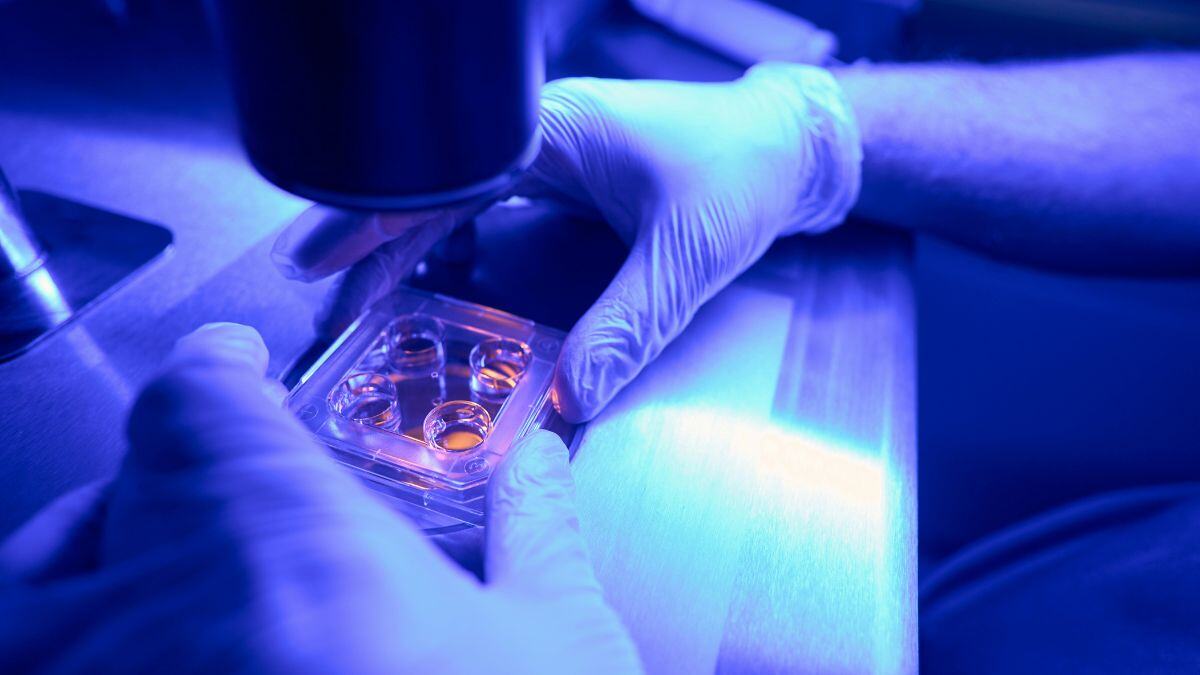Bioethics and Big Sheep
Author: John Stonestreet and Shane Morris

Authors: John Stonestreet | Shane Morris
Much of being a Christian in the modern world is urging people to see what’s really there, instead of dismissing everything as “nothing but.” Take the human embryo, for example. Abortion advocates have long labeled humans in the earliest stages of development as “nothing but” clumps of cells. This description is like calling Michelangelo’s David “a clump of marble.” The only difference is that while art historians know every detail of this statuary masterpiece, scientists are still unlocking the secrets of the embryo.
Earlier this month, a team of researchers with the Australian Institute for Science and Technology published a study on the “self-organizing” properties of embryos. In the paper, which appeared in The Proceedings of the National Academy of Sciences, David B. Brückner and Gašper Tkačik proposed a mathematical framework for understanding how embryos go from a single cell to a trillions-of-cells organism without any apparent centralized control.
They claim that biological processes often resemble pieces of a puzzle coming together. Pieces at times appear to organize themselves, fitting into place without external input or a centralized set of instructions, the way a school of fish or a flock of birds appear to make decisions to move as one, though no individual is in charge. In the case of an embryo, however, the “individuals” that appear to make decisions and develop as one are microscopic cells.
Brückner explained:
For many steps in this developmental process, the system has no extrinsic signal that directs it what to do. There is an intrinsic property of the system that allows it to establish patterns and structures. The intrinsic property is what is known as self-organization.
But how exactly does an organism without any central control self-organize? It appears as if, according to the researchers, the many types of cells differentiating to become eyes, gut, brain, and so on determine their roles and where they belong, not by consulting a set of blueprints, but by “communicating with each other using chemical signals.” These chemical signals, like the visual signals within a flock of birds, take place only between each individual and its immediate neighbors, ensuring that “everything is well synchronized and coordinated,” despite no single cell calling the shots.
The researchers also discovered that the process is “robust,” able to withstand the fluctuations or “noise” that occurs during early development. Embryos, in other words, have a goal, and they’re not easily deterred. They grow persistently toward order and function, unguided by anything except that mysterious “intrinsic property” so predictable it can be quantified using the “universal language” of “information theory.”
Two obvious takeaways from the study strongly counter the narrative that human embryos are “nothing but” clumps of cells. First, an actual clump of cells that was randomly thrown together would never do this. No matter how good the materialist’s imagination is, there is simply no way to gradually build a system in which each step depends on the last and are all required to make a viable living creature. The embryo and its “self-organizing” property is, to borrow the language of intelligent design, irreducibly complex. Simplify the process and you will not gain an evolutionary ancestor that could one day, through random variation, begin developing into a human. Rather, you have a dead embryo.
Second, from the moment of conception, a human embryo is intrinsically human. It never was, can never be, and was never going to be anything else. There is no time before a given human individual becomes human, nor is there a moment in embryonic development when life “begins.” Scientifically, that’s nonsense. To try to separate a human person from the embryo he or she once was, no matter the number of cells, is to draw an arbitrary line based on level of development. In fact, to do so makes about as much sense as drawing a line between toddlers and adults—which is to say, it makes no sense.
Especially in this age of unfettered assisted reproductive technology, which treats embryos as “potential humans,” this knowledge is crucial. The idea that we can create, then screen out or indefinitely freeze or discard human individuals at the earliest stage of development in order to bring one, “perfect,” IVF-conceived child to maturity is, to put it mildly, unethical.
The self-organizing properties of a human embryo testify to its God-given purpose and identity. To end or arrest this wondrous process for our convenience is to play God, and to deny His image in individuals who are, from the very earliest stage, “fearfully and wonderfully made.”

Author: John Stonestreet and Shane Morris

Author: John Stonestreet At last week’s annual meeting of the Southern Baptist Convention, the denomination voted to formally oppose the use of in...

Author: John Stonestreet